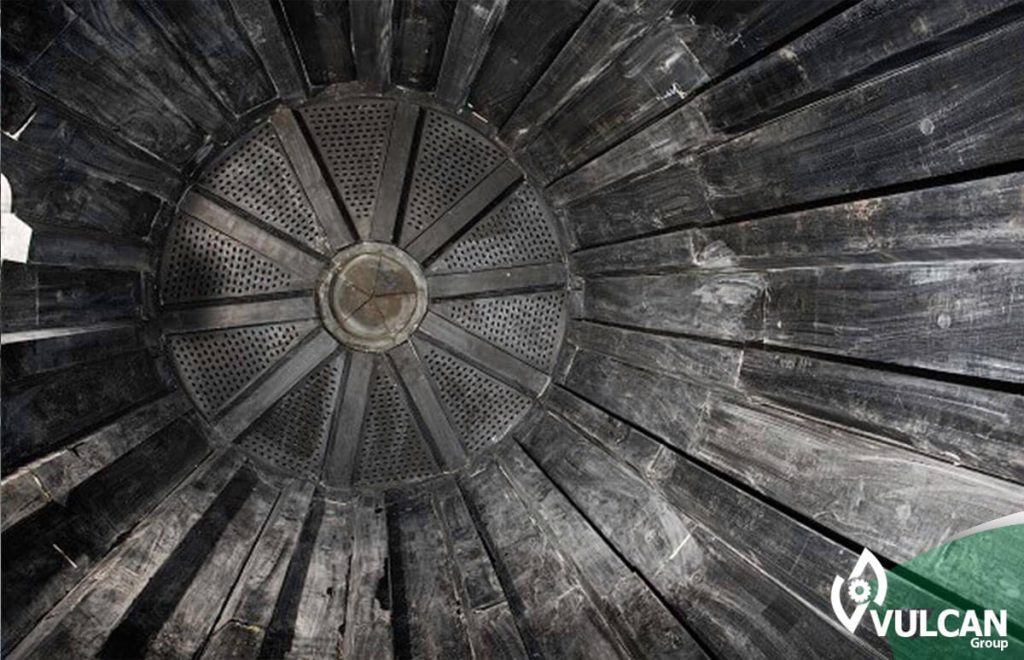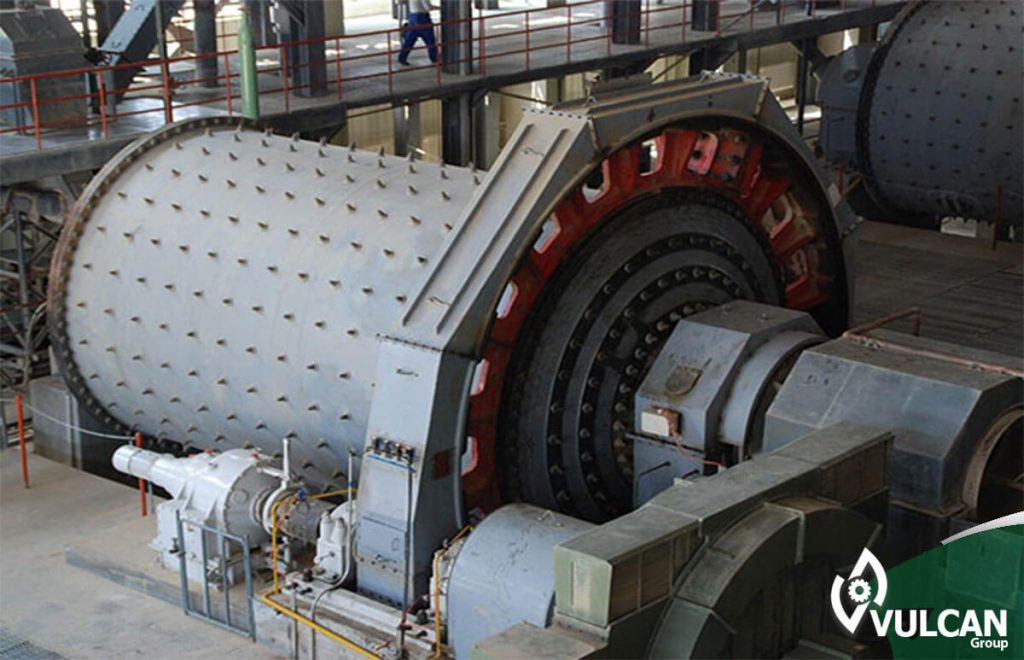Roll Covering
Roll covering in rubber industry refers to the process of re-covering rubber rollers that are used in different stages of the production process. Rubber rollers are widely used in the manufacture of products such as rubber industry, belt and hose manufacturing, sealing, textile and many other industries.
Roll covering roller covering in rubber industry refers to the process of re-coating rubber rollers that are used in different stages of the production process. Rubber rollers are widely used in the manufacture of products such as rubber industry, belt and hose manufacturing, sealing, textile and many other industries.
contents
Various types of rubber materials are used to cover rollers, including natural rubber, synthetic rubber and various compounds. The choice of material depends on the specific application and desired properties of the roller such as hardness, abrasion resistance and chemical resistance.
Over time, the rubber covering on the rollers can wear out or damage, which can lead to quality problems in the final product. Roll cover or roller veneer operation involves removing the old rubber lining from the roller and replacing it with a new rubber layer. The new rubber layer is applied using a process called vulcanization, which involves heating the rubber to high temperatures and applying pressure to connect it to the metal roller. In the rubber industry, roll covering or covering the roller with rubber is essential because it helps to ensure the quality and consistency of the final product. It also helps to extend the life of rubber rollers and reduces the need for replacement and maintenance.
Roller coverings are usually carried out by specialized companies that have the necessary equipment and expertise to perform this process accurately and efficiently. The cost of roll coating can vary depending on the size and complexity of the roller, the type of rubber material used and other factors. Contact us to order roller covering by Vulcan Sanat Sepahan Company.
What is a rubber roller?
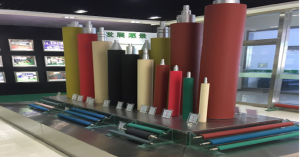
A rubber roller is a cylindrical roll made of durable and flexible rubber materials. Rubber rolls can be used in a variety of industrial applications for processes such as laminate, printing and textile and transmission. The surface of the rubber roll can be smooth or textured depending on the application, and the size of the roller can vary depending on the specific requirements of the process. Rubber rollers are known for their durability and ability to provide stable and reliable performance over long periods of use. Rubber roller components are generally composed of relatively soft rubber outer layer, hard rubber layer, metal core, roller neck and discharge hole.
Rubber rollers need to be processed after a while of use. Rubber roller processing operations include cleaning the core of the roller, modifying the connection surface, adhesive, twisting, winding, autoclave, and surface processing.
Rubber Roller Applications
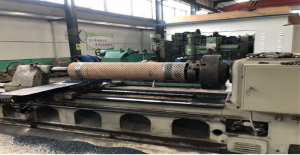
Rubber rollers have different applications in industries such as:
Agricultural Industries: Rubber rollers can be used in agricultural equipment to improve soil compaction by leveling and flattening agricultural farms.
Printing industry: In printing applications, rubber rollers are used to distribute ink on printed plates or on paper.
Processing in various industries: Rubber rolls can be used for conveyor belt systems for handling or processing bulky materials such as grains, sand and minerals.
Packaging industry: For packaging application, rubber rollers are used as printing rolls or nipple rolls for lamination or creating adhesive bonds between materials.
Textile industry: Rubber rollers are used to help feed fabrics, control tension, and apply paints and chemicals on fabrics.
Carpentry: In the woodworking industry, rubber rollers are used in sanding and straightening machines to create a smooth surface.
In general, rubber rollers have versatile and wide industrial applications that make them an essential component for various industries.
Classification and specifications of rubber rollers
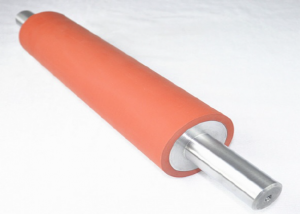
1.Silicon roller
One of the most important properties of this type of roller is high temperature resistance up to 200-250 degrees, and good chemical resistance is one of the outstanding properties of these rollers, but this type of roller has little tensile strength. Silicone roller can be used as fabric heat regulating roller, heat regulating roller embas (inlaid) plastic, clandering, photo copy, etc.
2.Polyurethane rubber
This type of roller has tensile strength, wear resistance and cracking resistance, as well as polyurethane roller is excellent in terms of resistance to different types of solvents.
3.NBR rubber roller
NBR rubber roller can be used in rollers printers, rubber rollers of food industry, rosie paint roller in printed fabrics in textile industry and soft rubber roller for contact with solvents, etc.
The important point about NBR rollers is that this type of roller has poor ozone resistance and when using it, the environment with high concentration of ozone should be avoided during processing.
4.Neoprene rollers
This type of roller is suitable for soft printing roller, engraving printing roller, etc.
5.Mirror roller
Mirror roller no. 45 steel without any seam with smooth surface that can be used to check the surface smoothness, for example, this type of roller is used in all factories producing machinery and automobiles.
Why Vulcan Industry Rubber Rollers?
1.Use of quality raw materials
- Roller stand: In Vulcan Group, the industry is considered a roller stand with suitable thickness according to the specific design that is done for the customer. The material of this base is used from steel no. 45 or seamless steel pipe no. 20. Some manufacturers reduce the thickness of the steel pipe to lower production costs, which cannot meet the necessary standard minimums.
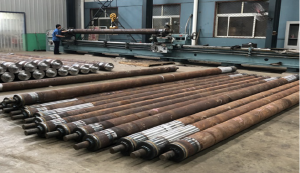
- Rubber: Vulcan is the forering industry of Scientific Rubber Production of Iran and all tires used in rollers are entirely domestic product of Vulcan Sanat factory and all stages of its production are produced in Vulcan Industry Complex. The rubber covering technique used in the Vulcan industry is a complex technique. In this complex process, rubber casting is carried out layer by layer on the base of the roller, after which the rubber is baked from raw form, while other manufacturers use sheet covering technology and the rubber is cold during processing and this will cause adhesion problems.

2.Production process in accordance with international standards
- Dynamic equilibrium: In the Vulcan industrial complex, before installing the roller shaft head, two complete steps of dynamic balance test are performed on each rubber roller, which ensures effective and continuous use.
- Hot charging technique: In Vulcan Industrial Group, hot charging technique is used to install shaft head and after contraction, it is welded to make sure that the shaft installation has the desired quality, while other suppliers weld the shaft head directly.
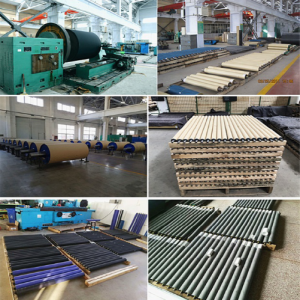
Online order registration of roll covering
To place an order, just enter your details and contact number, our experts will contact you as soon as possible.
Related Content
How useful was this post?
Click on a star to rate it!
Average rating 5 / 5. Vote count: 2
No votes so far! Be the first to rate this post.

